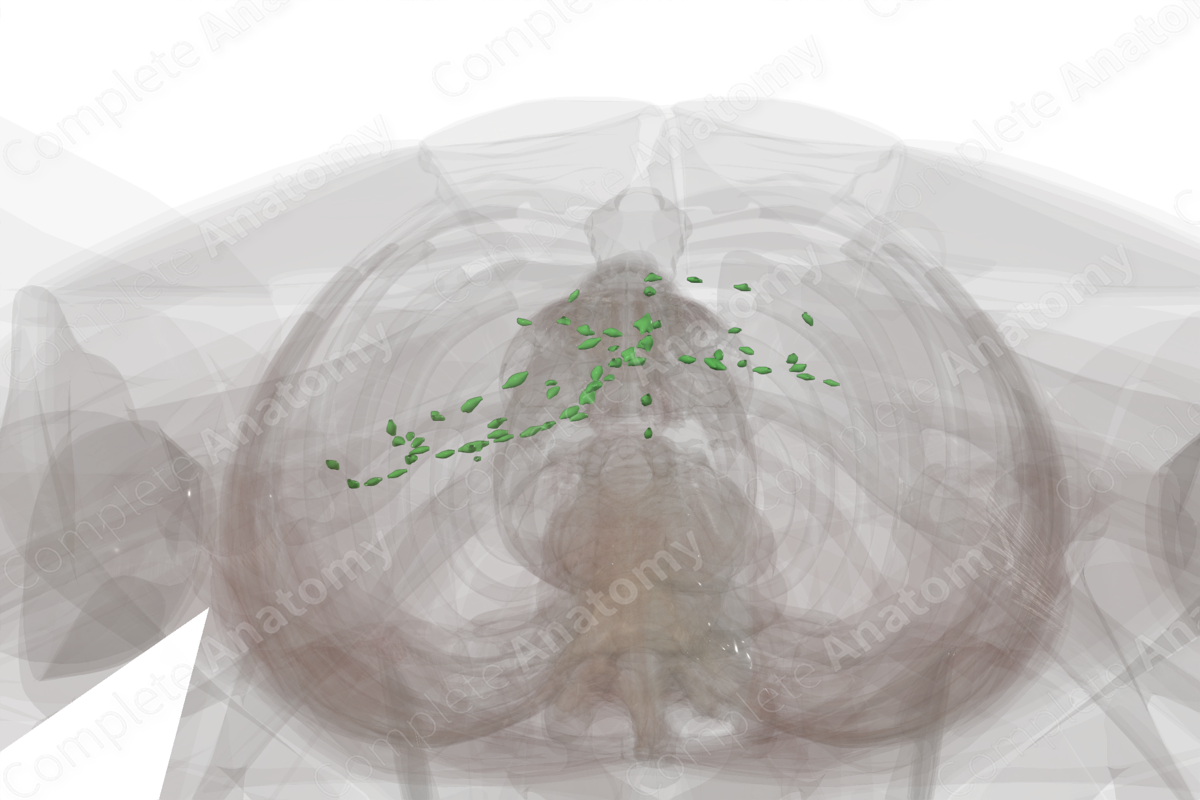
Quick Facts
Location: Accompany the superior mesenteric artery and its branches.
Drainage: Intestines.
Direction of Flow: Intestinal trunk and left lumbar nodes > cisterna chyli > thoracic duct.
Description:
Description: (Location & Drainage)
The superior mesenteric nodes are the largest groups of lymph nodes in the body, with 100–150 nodes dispersed around the mesentery. It can be categorized into three groups:
—peripheral group, which is formed by the juxtaintestinal nodes found at the arterial arcades adjacent to the intestines;
—intermediate group, which are found along the branches of the superior mesenteric artery (i.e., the ileocolic, prececal, retrocecal, appendicular, paracolic superior mesenteric, right colic, and middle colic nodes);
—central group, which are formed by the central superior mesenteric nodes arranged as a chain along the superior mesenteric artery.
The intermediate nodal group receives lymph from afferent vessels directly from the midgut, or via the juxtaintestinal nodes. Their efferents extend to the central nodal group. The efferent vessels of the central superior mesenteric nodes, along with the gastric, hepatic, and splenic nodes, unite to form the intestinal trunk, which passes lymph to the cisterna chyli or the left lumbar trunk (Földi et al., 2012).
References
Földi, M., Földi, E., Strößenreuther, R. and Kubik, S. (2012) Földi's Textbook of Lymphology: for Physicians and Lymphedema Therapists. Elsevier Health Sciences.
Description:
Description: (Location & Drainage)
The superior mesenteric nodes are the largest groups of lymph nodes in the body, with 100–150 nodes dispersed around the mesentery. It can be categorized into three groups:
—peripheral group, which is formed by the juxtaintestinal nodes found at the arterial arcades adjacent to the intestines;
—intermediate group, which are found along the branches of the superior mesenteric artery (i.e., the ileocolic, prececal, retrocecal, appendicular, paracolic superior mesenteric, right colic, and middle colic nodes);
—central group, which are formed by the central superior mesenteric nodes arranged as a chain along the superior mesenteric artery.
The intermediate nodal group receives lymph from afferent vessels directly from the midgut, or via the juxtaintestinal nodes. Their efferents extend to the central nodal group. The efferent vessels of the central superior mesenteric nodes, along with the gastric, hepatic, and splenic nodes, unite to form the intestinal trunk, which passes lymph to the cisterna chyli or the left lumbar trunk (Földi et al., 2012).




